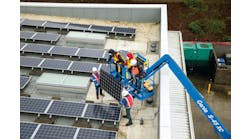Construction put in place in October dropped 1 percent from September, according to a report from the United States Census Bureau.
Residential construction decreased 1.9 percent in October, bringing the cumulative decline to 10 percent since peaking in March.
“A closer look at the subcategories shows nonresidential construction still has many areas of strength,” said Ken Simonson, chief economist for The Associated General Contractors of America. “For instance, lodging construction — mainly hotels and resorts — leaped 8 percent in October and was up 70 percent from the October 2005 level. The multi-retail category, covering shopping centers, malls and general merchandise stores, rose 1.3 percent in October and 36 percent compared to the year-ago month. Private electric power construction was up 3.3 percent for the month and 26 percent relative to October 2005. Private hospital construction gained 0.5 percent and 23 percent respectively. But private nonresidential construction slipped 0.7 percent for the month, dragged down by declines of 3.1 percent in manufacturing, 1.6 percent in office and 1.4 percent in commercial construction.”
Highway and street construction gained 0.3 percent in October and 16 percent compared to October 2005, reflecting higher materials costs and the ongoing boost from the federal highway reauthorization law enacted in August 2005. Education spending rose 0.2 percent for the month and 6.4 percent year over year, while total public construction increased 0.8 percent in October and 16 percent compared with October 2005.
“The residential totals hide some good news,” Simonson added. “New multi-family construction climbed 1.6 percent in October and 15 percent compared to October 2005, while improvements rose 1.5 percent and 4.9 percent. But those numbers were swamped by declines of 3.9 percent and 17 percent for new single-family construction.
“Going forward, I think there is still plenty of life left in hotel, hospital, energy-related and public spending. But single-family home construction will remain in free fall for several more months.”





